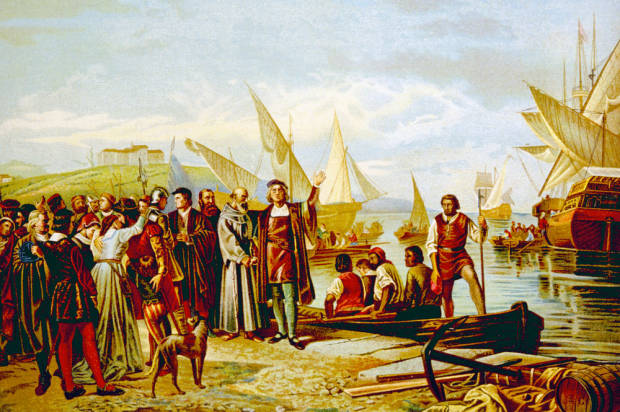
WhiteWhite men must be stopped: The very future of mankind depends on it
Frank Joice
For 500 years, they've exploited their fellow man and plundered the planet. It's time they rein themselves in
(SCROLL DOWN)
*
*
*
*
*
*
*
*
*
*

The future of life on the planet depends on bringing the 500-year rampage of the white man to a halt. For five centuries his ever more destructive weaponry has become far too common. His widespread and better systems of exploiting other humans and nature dominate the globe.
Admittedly, this encouraging development is hardly the dominant view. To the contrary, given the possibility that Donald Trump, Ted Cruz, Ben Carson or one of their ilk might become president, white supremacist ideology seems to be digging in harder than ever.
I don’t take this lightly. Once upon a time I foolishly thought that there was no way that Ronald Reagan could get elected president. Lesson learned. Now is the time to start contingency planning for intensified resistance to mass deportations of immigrants, atrocities against Muslims and extreme danger to African Americans.
That said, it would be a mistake to focus only on the negative. Recently theNew York Times ran Gordon Davis’ op-ed What Woodrow Wilson Cost My Grandfather. It is still generating debate. (Gordon Davis and I are both “alumni” of the Northern Student Movement, a 1960s civil rights group.) Davis was writing in the context of the student-led protest at Princeton University over the veneration of its former president, Woodrow Wilson. The controversy stems from Wilson’s viciously racist speech and behavior particularly when he was president of the United States.
A subsequent Truthout article by Harvey Wasserman, “Princeton Students Are Right, Woodrow Wilson Was Way Worse Than You Think,” complements the critique. Most of the 776 comments on theNY Times article (as well as 1,600 more on a followup Times editorial) were the predictably negative responses usually heard regarding white racism. Many said some version of, “that was a long time ago when values were different.” Others took the tack that “nobody is perfect and the good things Woodrow Wilson did outweigh the bad of his racism, so let it rest.”
But there was also a substantial undercurrent voiced by those who were open-minded enough to learn.
Following are NY Times comments on the article:
Jim K. New York, NY 2 days ago
As a former Princeton professor, I applaud the students for raising this issue. It’s not about erasing history, but confronting it honestly. This beautiful column makes clear how Wilson’s policies, based on his deeply racist and white-supremacist views, destroyed the lives of thousands of black families. Why should we publicly venerate this person? Why should elitist Northern universities get to insist that we overlook this man’s systematic, consequential racism, while every Southern municipality and retail store is expected to rid itself of monuments and souvenirs of their racist politicians and soldiers. Let’s indeed, every American community, take stock of the deeply embedded racism that has been a part of our history (North and South), recognizing that a thoroughgoing accounting will involve reconfiguring our public and institutional spaces in many ways. Because that has yet to be done, and the younger generation of Black militants will, rightly, not be content until it is.
JPBarnett Santa Barbara 1 day ago
It’s sad that after having been through 12 years of grade school in CA and graduating from a UC, I just learned this about Wilson. It’s silly that I’m surprised I didn’t learn of his racism I suppose, but I’m glad I do now. My opinion is forever changed.
Many commenters were startled to learn about a long known but rarely taught side of Woodrow Wilson. White people have a lot to be surprised about. The very nature of white supremacy requires sanitized teaching about slavery, the genocide of indigenous people, the reach of U.S. militarism and many other topics.
Fortunately, gains from past struggles give African Americans increased opportunities to expose what was previously deliberately obscured. Ta-Nehisi Coates is the best known of a new generation of black, indigenous, Hispanic and white writers, scholars and activists revealing ugly realities hidden from most of us.
Even the New York Times conservative columnist David Brooks has acknowledged this development. “So much of the national conversation this year has concerned how to think about past racism and oppression, and the power of that past to shape present realities: the Confederate flag, Woodrow Wilson, the unmarked sights of the lynching grounds. Fortunately, many people have found the courage to tell the ugly truths about slavery, Jim Crow and current racism that were repressed by the wider culture.”
